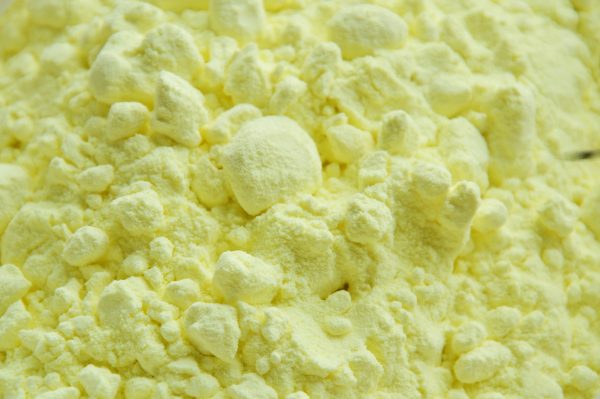Industrial sulphur powder is produced from natural sulphur and from other sulphur-containing substances and is now generally recovered as a by-product. However, such sulfur cannot be used in industrial production, because such sulfur still contains a lot of impurities, which need to be removed before the industrial sulfur powder we generally see. So how to remove impurities in crude sulfur?
What are the impurities in crude sulfur? Class I: Meltable impurities, such as organic hydrocarbons and arsenic, selenium, tellurium, etc. In industry, the hydrocarbon compounds contained in sulfur are converted to carbon. Sulfur containing carbon ≤ 0.08% is called “bright sulfur”. The sulfur content of 0.4% to 0.9% is called “black sulfur”. Because the impurities are soluble, it brings certain difficulties to the purification of sulfur. The other category: insoluble impurities, such as soil, sand, ash and other insoluble impurities, generally speaking, it is relatively easy to remove such impurities from sulfur.
Harm and elimination of free acids, hydrocarbons and ash in solid sulfur. The device that uses sulfur as raw material is to spray liquid sulfur into the sulfur dioxide gas produced by combustion in a sulfur incinerator to produce subsalt. If solid sulfur is used as the raw material, the solid sulfur must be melted into liquid sulfur, and this operation process is completed in the raw material process. When the solid sulfur is melted into liquid sulfur, the harmful components in the solid sulfur are mainly free acid, hydrocarbons and ash.
The harm of free acid and its elimination method: After the solid sulfur is melted into liquid sulfur, its density is about 1.8t/m3, and the free acid brought in floats on its surface due to its low density, and the color is darker. If no measures are taken, the liquid The heating coil, tank body, infusion pipeline, equipment, etc. at the surface will be severely corroded. In severe cases, the heating coil is worn out after a week of use, and the stainless steel filter screen of the filter is severely corroded, causing all the filter screens to be scrapped. In addition, the entry of free acid into the sulfur incinerator will bring trouble to the subsequent acid production process. At this time, sulfur powder manufacturers generally use two methods, one is to add lime to neutralize, and the other is to add sodium carbonate to neutralize. It should be noted here that the calcium sulfate and sodium sulfate produced after adding lime or sodium carbonate must be removed.
Hazards and elimination methods of hydrocarbons: Hydrocarbons are generally bitumen-like thick substances. The water and carbon dioxide generated by combustion in the sulfur incinerator increase the water vapor content in the furnace gas, and at the same time, some ash will be produced during the combustion process. The sulfur incinerator is scarred or deposited in the tube of the fire tube waste heat boiler, which reduces the cross-sectional area of the tube and increases the furnace gas resistance in the boiler. The method of hydrocarbon removal: neutralization and filtration can remove 30-50% of hydrocarbons, but it is not easy to remove completely.
The hazard of ash and its elimination: solid sulfur is inevitably mixed with sediment and dust after many times of transportation and stacking, and the use of lime to neutralize the sundries brought in with the lime and the solids such as calcium sulfate generated by neutralization belong to liquid sulfur. of ash.
After removing impurities and a series of technological processes, the fine industrial sulfur powder we generally see is obtained.

